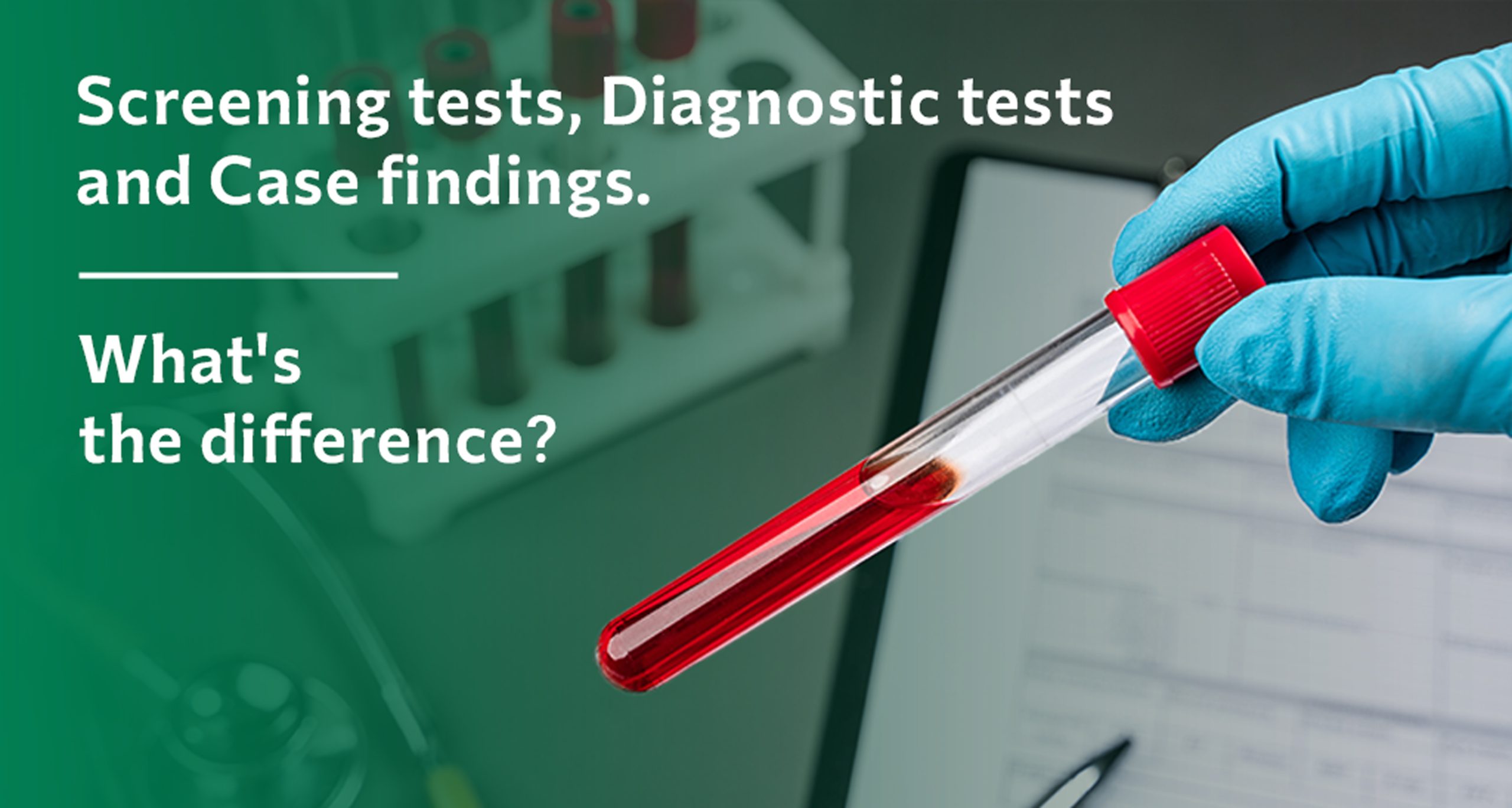When we fall ill and recognize symptoms of a health issue, we go see the doctor, and the doctor orders various kinds of tests. but many of us overlook or forget to inquire about the type of test – whether it’s a screening or diagnostic test. Staying informed about the specific test conducted is equally important. So in this blog, we delve into the difference between various test methods like diagnostic tests, screening tests, and case findings.
Difference between various test methods:
Diagnostic Tests:
Diagnostic tests are performed when a patient presents with specific symptoms or clinical signs that suggest the presence of a particular disease or condition. These tests are either used to confirm or rule out a diagnosis and to determine the exact nature and severity of the disease. Diagnostic tests are generally more specialized and focused, aiming to provide a precise understanding of the patient’s condition.
Screening Tests:
Screening tests are done on individuals who may not exhibit any symptoms but are at risk for a particular disease. The aim of these tests is to uncover potential cases at an initial phase and to particularly aid in appropriate treatment. Unlike diagnostic tests, screening tests possess a wider scope and are less specific. In any case, If the screening test gives a positive result, additional diagnostic assessments are generally required to validate the presence of the disease. Examples of screening tests include mammograms for detecting breast cancer, Pap smears to screen for cervical cancer, and also blood glucose tests for assessing diabetes risk.
Case Findings:
Case findings involve actively seeking out cases of a particular disease or condition within a population, despite the absence of symptoms. However, this is done through surveys, testing campaigns, or targeted interventions. Case findings are often situations where a disease might be present but not yet diagnosed or where it’s crucial to detect cases early for public health reasons. Once cases are identified through case findings, appropriate diagnostic tests are conducted to confirm the diagnosis.
Instead of relying on symptoms to manifest, this involves finding the population who might be at risk. This method is particularly vital in the management of outbreaks involving communicable diseases. By actively identifying individuals or groups at risk, the aim is to prevent the disease from progressing by intervening before symptoms present, and thereby mitigating the impact of the disease’s outbreak.
Here’s a breakdown of the difference between the terms
| Diagnostic Tests | Screening Tests | Case Findings | |
| Purpose | To diagnose the presence/absence of a disease | To detect diseases early | To control epidemics |
| Target population | Individuals who present with signs and symptoms of a disease | Asymptomatic population | At risk population |
| Method | Invasive/non-invasive extensive testing to arrive at a diagnosis. | Simple and easy physical examinations or blood tests.
|
Testing, Trials coupled with targeted intervention to arrive at a conclusive statement. |
| Result | Results finally provide a definitive diagnosis | Indicates suspicion of a disease. Further testing is needed eventually. | Different from the two, Results contribute to preventing epidemics and outbreaks.
|
| Examples | MRI, CT, Biopsy. | Mammogram, Pap smear tests, blood tests. | TB case study, Covid-19 findings, STI case findings. |
In conclusion, awareness of diagnostic tests, screening tests, and case findings gives individuals the ability to differentiate between these methodologies and equips them with the tools to make informed choices about their health.

